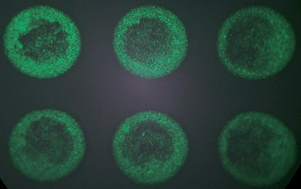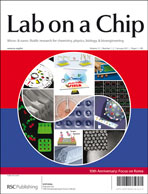A printed nanolitre-scale bacterial sensor array
Abstract
The last decade has witnessed a significant increase in interest in whole-cell biosensors for diverse applications, as well as a rapid and continuous expansion of array technologies. The combination of these two disciplines has yielded the notion of whole-cell array biosensors. We present a potential manifestation of this idea by describing the printing of a whole-cell bacterial bioreporters array. Exploiting natural bacterial tendency to adhere to positively charged abiotic surfaces, we describe immobilization and


 Please wait while we load your content...
Please wait while we load your content...